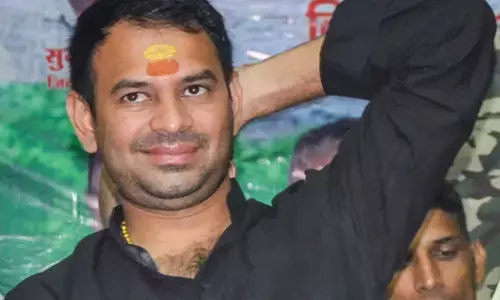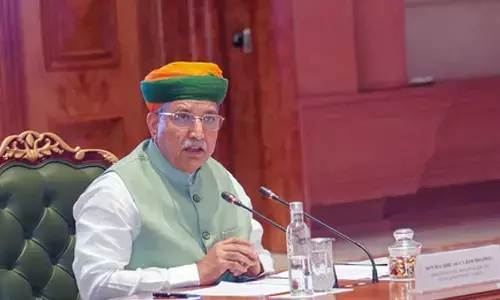Human trafficking takes on horrific dimensions

Trafficking victims from South Asian countries including India are detected in many parts of Europe, according to a new UN report that said human trafficking has taken horrific dimensions with children accounting for a third of those being trafficked
United Nations: Trafficking victims from South Asian countries including India are detected in many parts of Europe, according to a new UN report that said human trafficking has taken "horrific dimensions" with children accounting for a third of those being trafficked.
The 'Global Report on Trafficking in Persons 2018' from the UN Office on Drugs and Crime (UNODC) draws on information from 142 countries, examining trafficking trends and patterns. The report said human trafficking is taking on "horrific dimensions", with sexual exploitation of victims the main driver. Children now account for 30 per cent of those being trafficked, and far more girls are detected than boys.
Victims from South Asia (and South-West Asia) are also detected in many parts of Western and Southern Europe. They account for about 5 per cent of the total detected victims in this subregion. "Victims are trafficked from most South Asian countries, including Bangladesh, India, and Pakistan, and to a limited extent also from Nepal and Sri Lanka. Victims from Afghanistan have been detected in the Nordic countries, the Netherlands, and the United Kingdom,” it said.
The report further said that as an origin area for trafficking to the rest of the world, victims from South Asia have been detected in more than 40 countries around the world. The main destinations appear to be the countries of the Gulf Cooperation Council in the Middle East. To a lesser extent, victims from South Asia have been detected in Western and Southern Europe and in North America. Victims from South Asia - Bangladesh and India - have also been detected in South-East Asia.
Based on the limited information available for Bangladesh, Maldives, Nepal and Pakistan, female victims in this sub-region account for 59 per cent of the total detected victims. UNODC Executive Director said Yury Fedotov said that "human trafficking has taken on horrific dimensions as armed groups and terrorists use it to spread fear and gain victims to offer as incentives to recruit new fighters," citing child soldiers, forced labour and sexual slavery as examples.
While the average numbers of reported victims had fluctuated during the earlier years for which UNODC had collected data, the global trend has shown a steady increase since 2010. Asia and the Americas are the regions which have seen the largest increase in the numbers of victims detected, which may be explained by improved methods of detecting, recording and reporting data on trafficking – or a real increase in the number of victims.
Most victims of trafficking detected outside their region of origin are from East Asia, followed by sub-Saharan Africa: whilst there has been an increase in the number of convictions for trafficking in these regions, the study concluding that large areas of impunity still exist in many Asian and African countries, and conviction rates for trafficking remain very low. Trafficking for sexual exploitation is the most prevalent form in European countries, whilst in sub-Saharan Africa and the Middle East, forced labour is the main factor driving the illicit trade.
Women and girls make up most trafficking victims worldwide: almost three-quarters of them are trafficked for sexual exploitation, and 35 per cent (women and girls) are trafficked for forced labour. The main focus of the report is on the impact of armed conflict on trafficking. In conflict zones, where the rule of law is weak, and civilians have little protection from crime, armed groups and criminals may take the opportunity to traffic them.
One example given in the study is the phenomenon of girls and young women in refugee camps in the Middle East being "married off" without their consent and subjected to sexual exploitation in neighbouring countries. Addressing human trafficking is a key part of the UN Sustainable Development Agenda, requiring Member States to monitor progress in tackling the problem, and report the number of victims by sex, age and form of exploitation.
However, significant gaps in knowledge remain, with many countries in sub-Saharan Africa, South Asia and some parts of East Asia still lacking sufficient capacity to record and share data on trafficking in persons. "This report shows that we need to step up technical assistance and strengthen cooperation, to support all countries to protect victims and bring criminals to justice, and achieve the Sustainable Development Goals," Fedotov said.
- Yoshita Singh


















